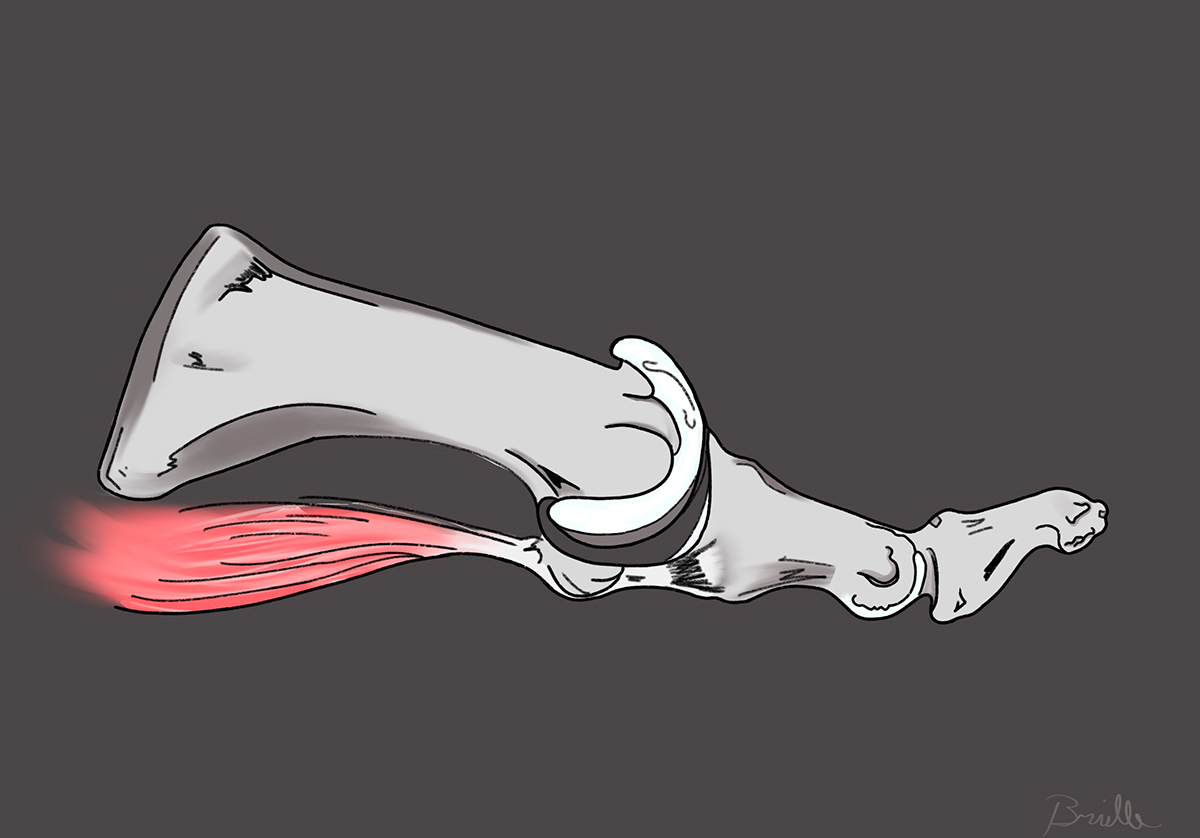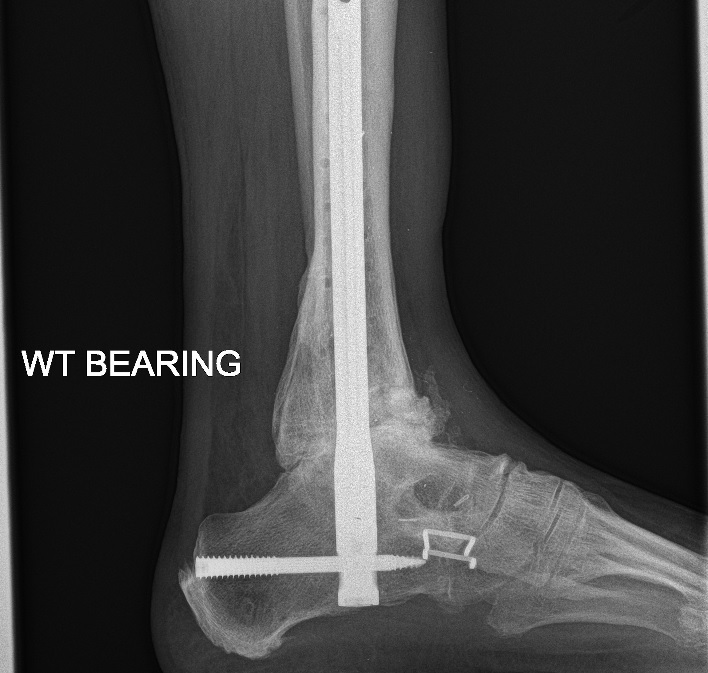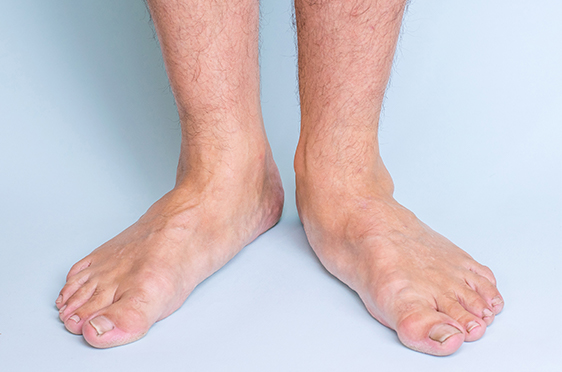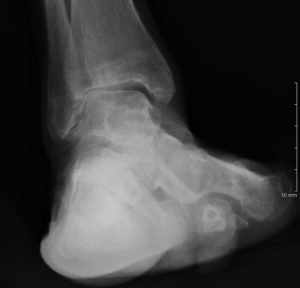Arthritis of the great toe is called hallux rigidus. it is a common condition that results in a painful and sometimes deformed great toe. It is often confused with a bunion deformity because bone spurring often forms on the top of the joint that causes a boney lump. The key difference is that in most bunion deformities the great toe can move up and down where in hallux rigidus the movement of the great toe is limited and often painful.

Hallux Rigidus
Arthritis is a loss of joint cartilage, which allows the joint to easily glide. Without it, the bones grind together and the joint becomes stiff and painful. Eventually, there may be the formation of bony spurs (osteophytes) around the joint. Great toe arthritis, occurs more often in men but it happens in women as well. This usually takes several years to become apparent and most patients become symptomatic between their late 40’s to middle 50’s.
Arthritis of the great toe joint (Hallux Rigidus) can be caused by a number of problems:
- Osteoarthritis
- Injury
- Long-standing bunions
- Gout
- Infection
- Rheumatoid or other inflammatory diseases
Hallux rigidus causes pain and stiffness in the great toe joint. This can lead to other problems in the foot because, as the sufferer has pain when walking, they unconsciously transfer their weight away from the painful great toe leading to pain or fracture in the smaller bones of the foot.
As arthritis becomes more severe, spurs of bone (osteophytes) develop around the joint. These often rub on shoes and cause pain and inflammation.
TREATMENT OF GREAT TOE JOINT ARTHRITIS
It is possible to treat this condition without surgery, although it is less effective than in other foot problems. Most patients do well with surgery.
Conservative Treatment
Conservative care is directed at relieving pain but cannot reverse the condition. Using larger shoes, for example, accommodates the prominent spurs and a stiff insole can reduce painful motion. Anti-inflammatory medications and steroid injections have temporary effects on reducing pain.
Surgical Treatment
The aim of surgery is to relieve pain and improve the function of the forefoot. The type of surgery depends on the severity of arthritis.
There are five types of procedures routinely performed for great toe arthritis:
- Cheilectomy is a cleaning of the joint and removing of the spur. Many surgeons have abandoned this procedure as many patients have had to have another procedure because the problem returned. This procedure is generally performed on patients without advanced arthritis.
- Osteotomy is the cutting and movement of bone. In this case, the first metatarsal is moved similar to bunion correction. This is usually performed when there is an identifiable raising of the metatarsal that causes the toe joint to jam. Additionally, this procedure is performed when there is no advanced arthritis of the joint and done along with a Cheilectomy.
- Fusion of the joint (arthrodesis) is a common procedure for hallux rigidus because of its long-lasting effectiveness in relieving pain, especially in younger active patients.
- Resection Arthroplasty refers to “changing” the joint. In some cases, part of the joint is simply removed. This type of arthroplasty is reserved for the elderly due to its simplicity and lack of patient activity.
- Implant Arthroplasty is a procedure where the joint is replaced with a prosthetic joint. The benefit to this procedure is that post-operative recovery is relatively short. The goal is to relieve pain and maintain some motion of the great toe joint allowing for the wearing or shoes with a heel. It is important to note that full pre-arthritis range of motion is not expected to be restored.
Great toe joint surgery is performed in the operating room and can be performed in about an hour. Patients generally go home shortly after the procedure. Sutures are removed in about 2 weeks and return to activity is expected around 3-5 weeks but can take up to 8 weeks in the case of fusion.




